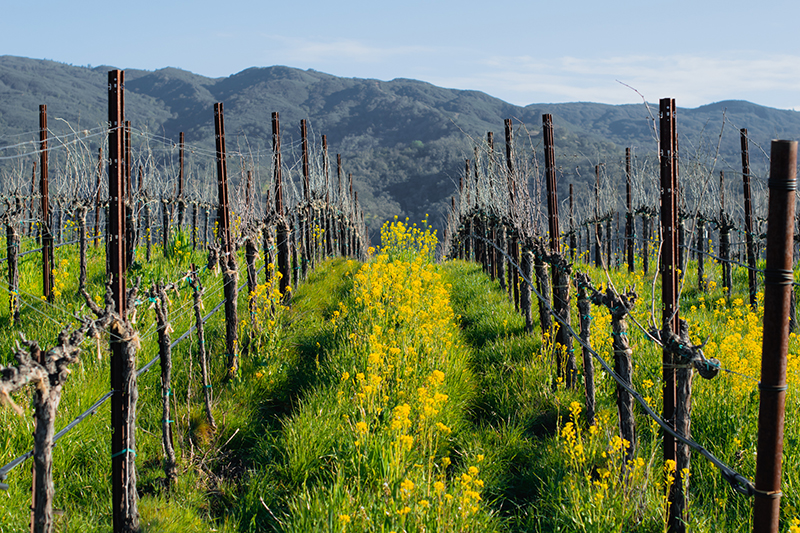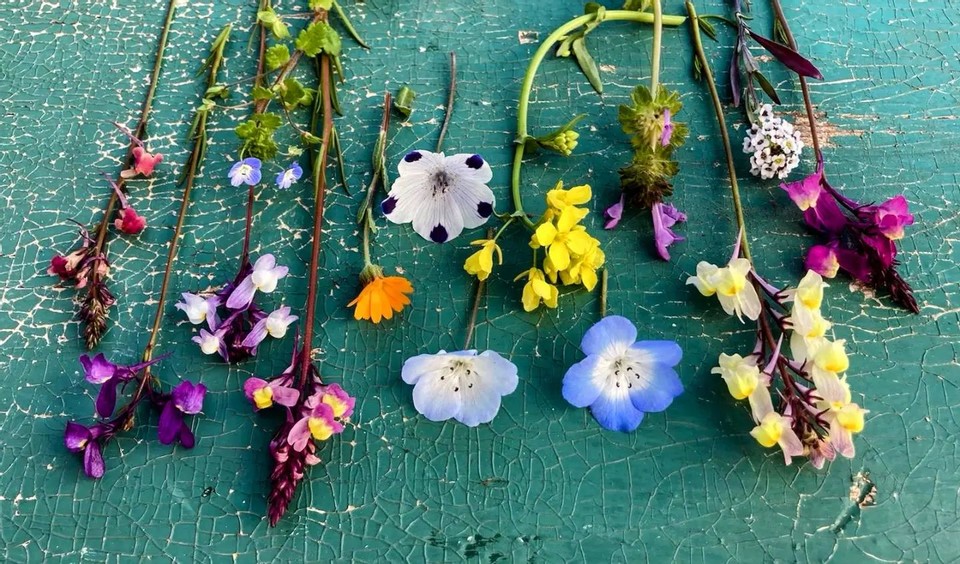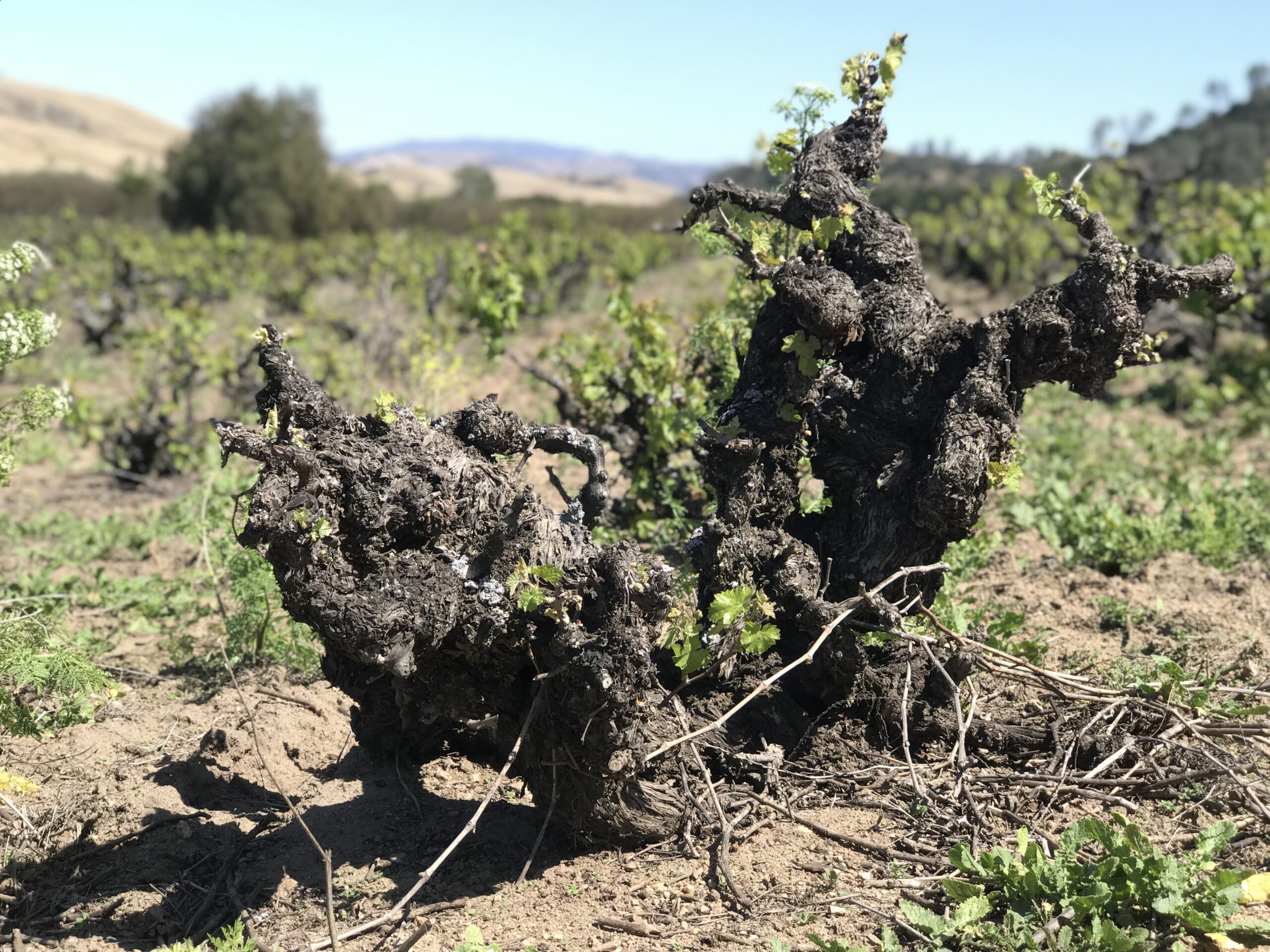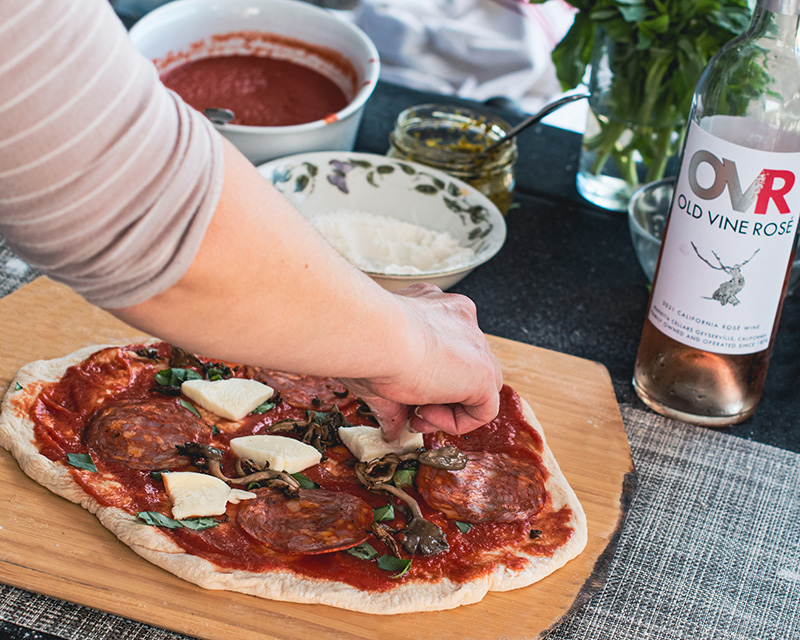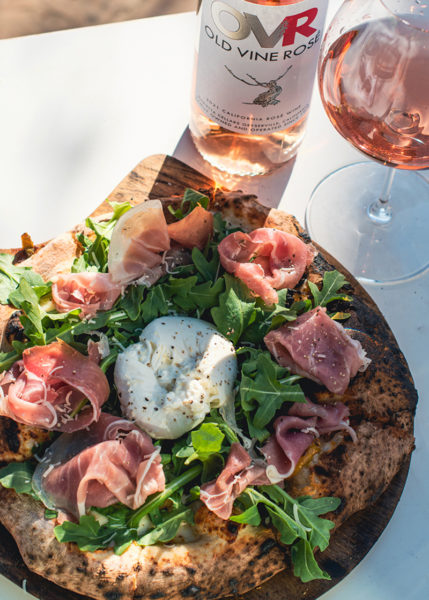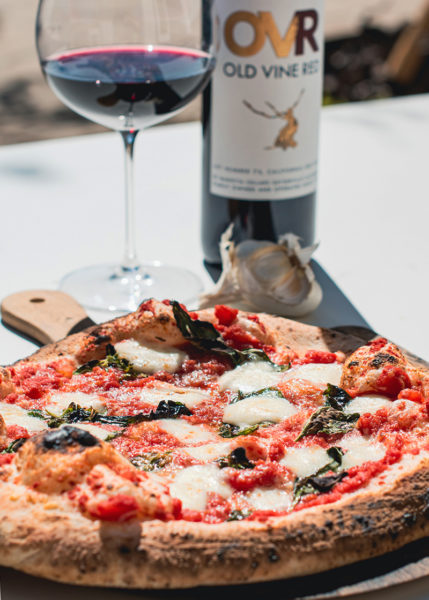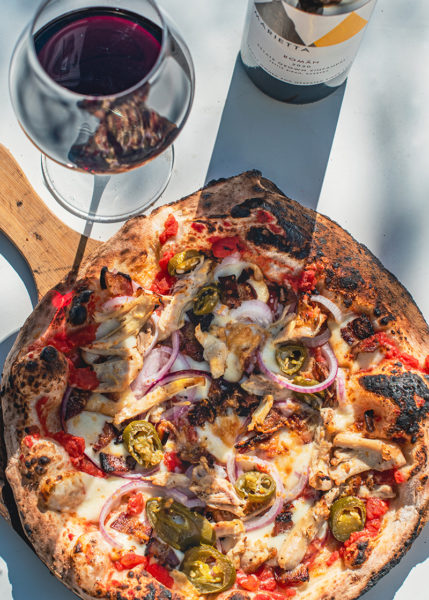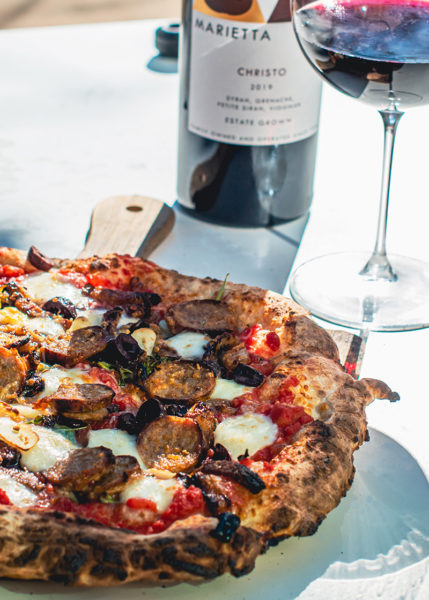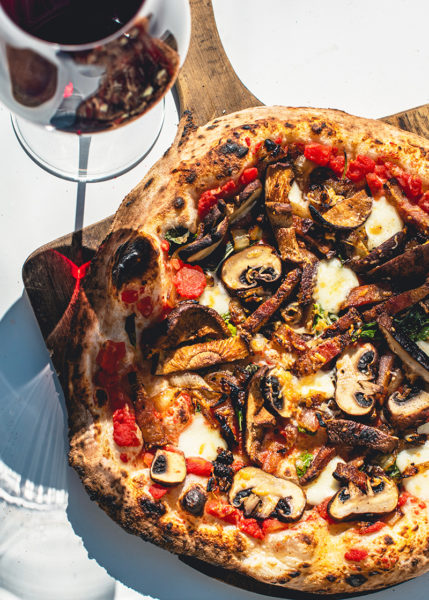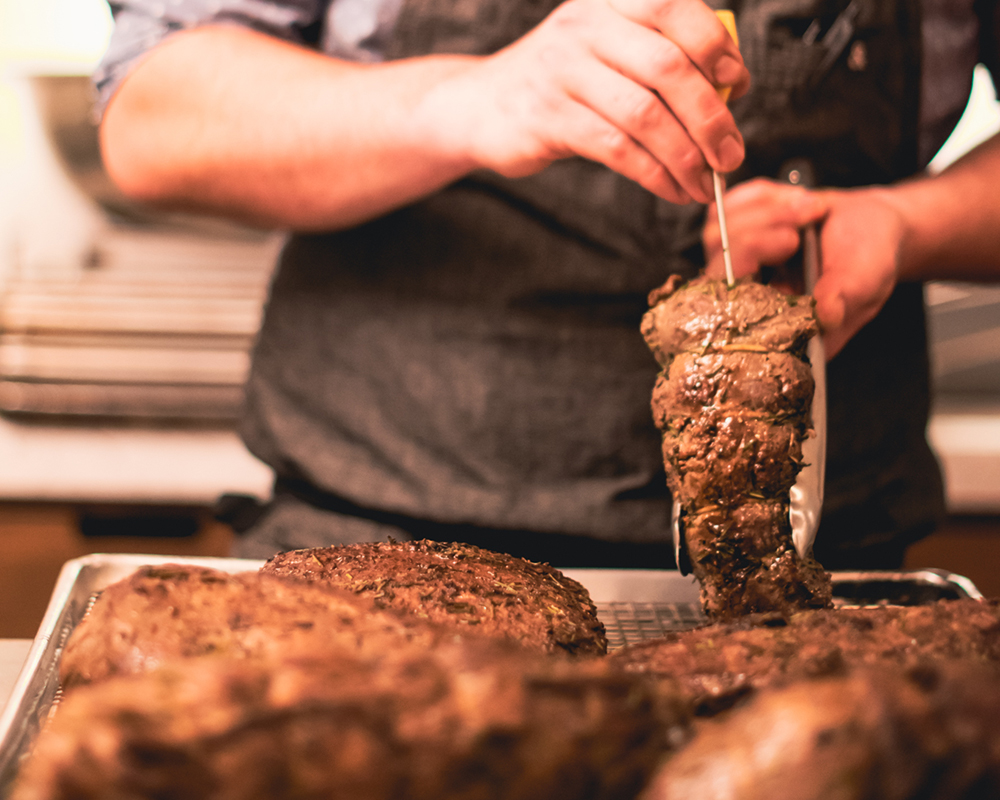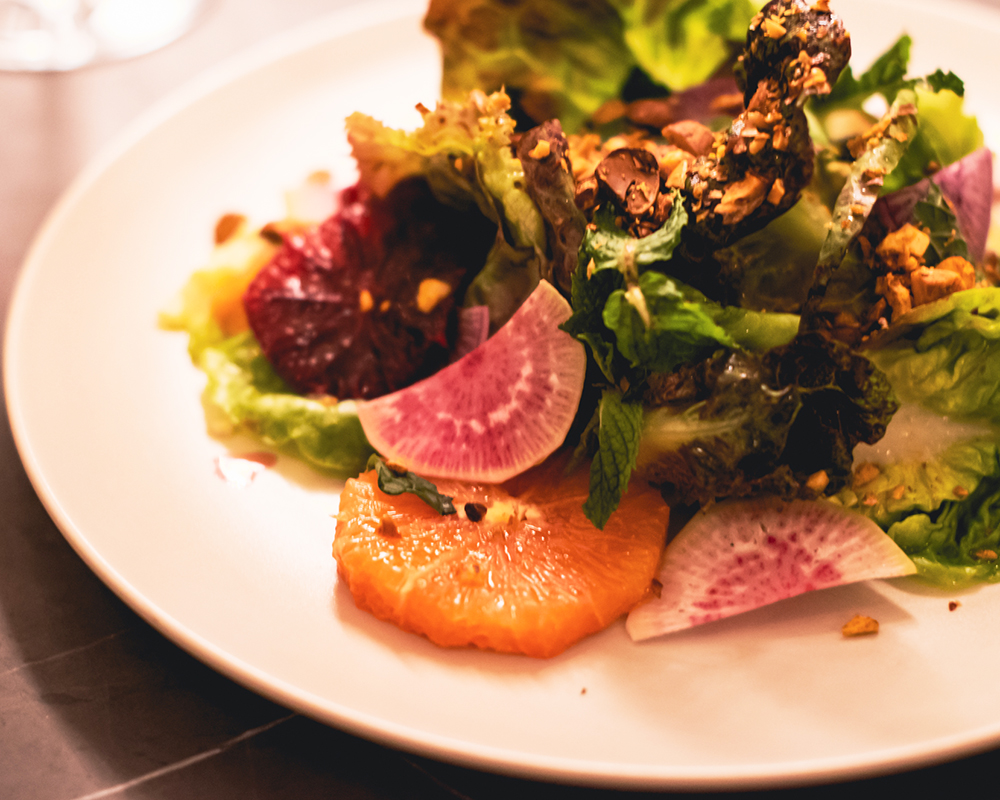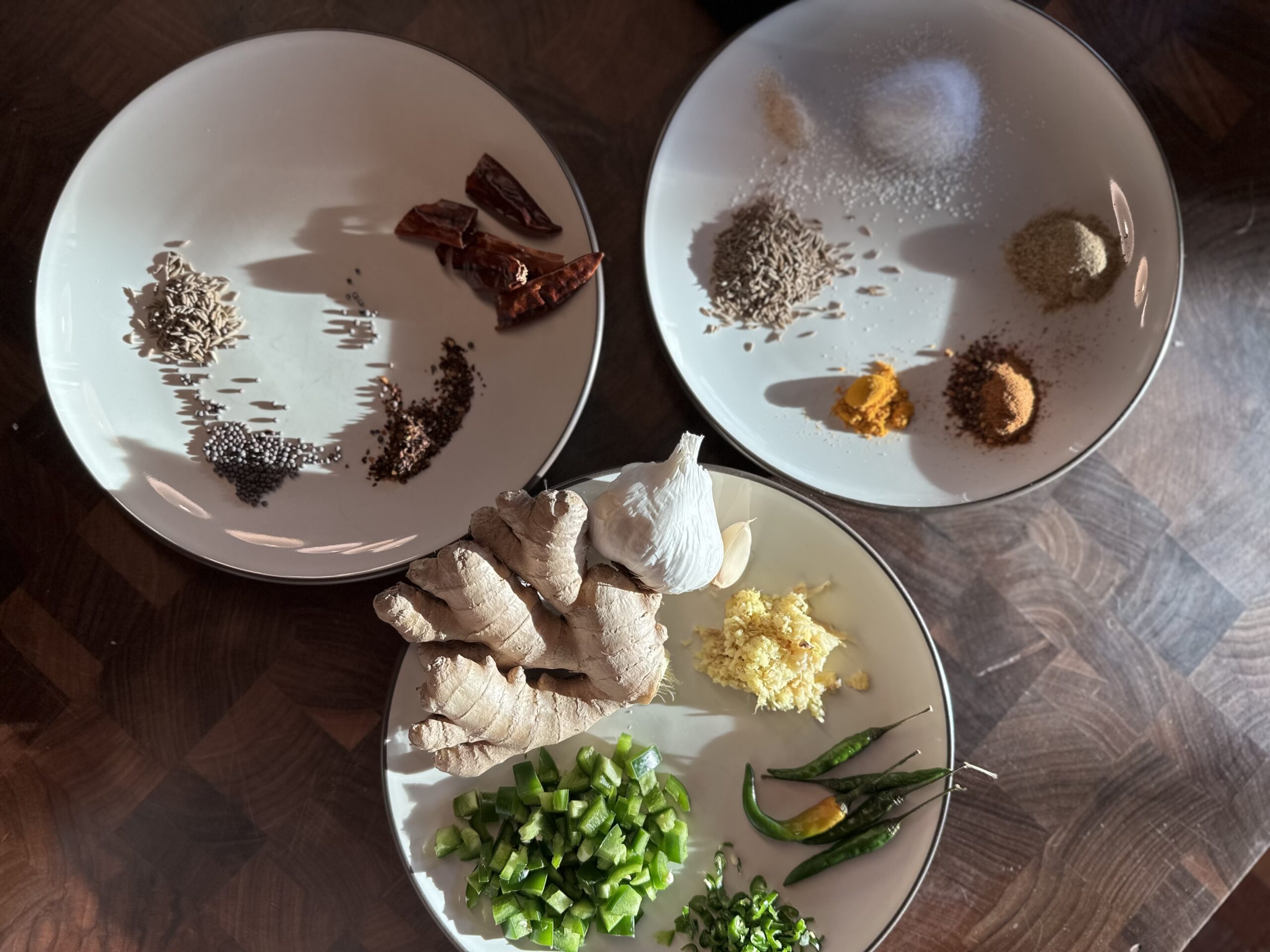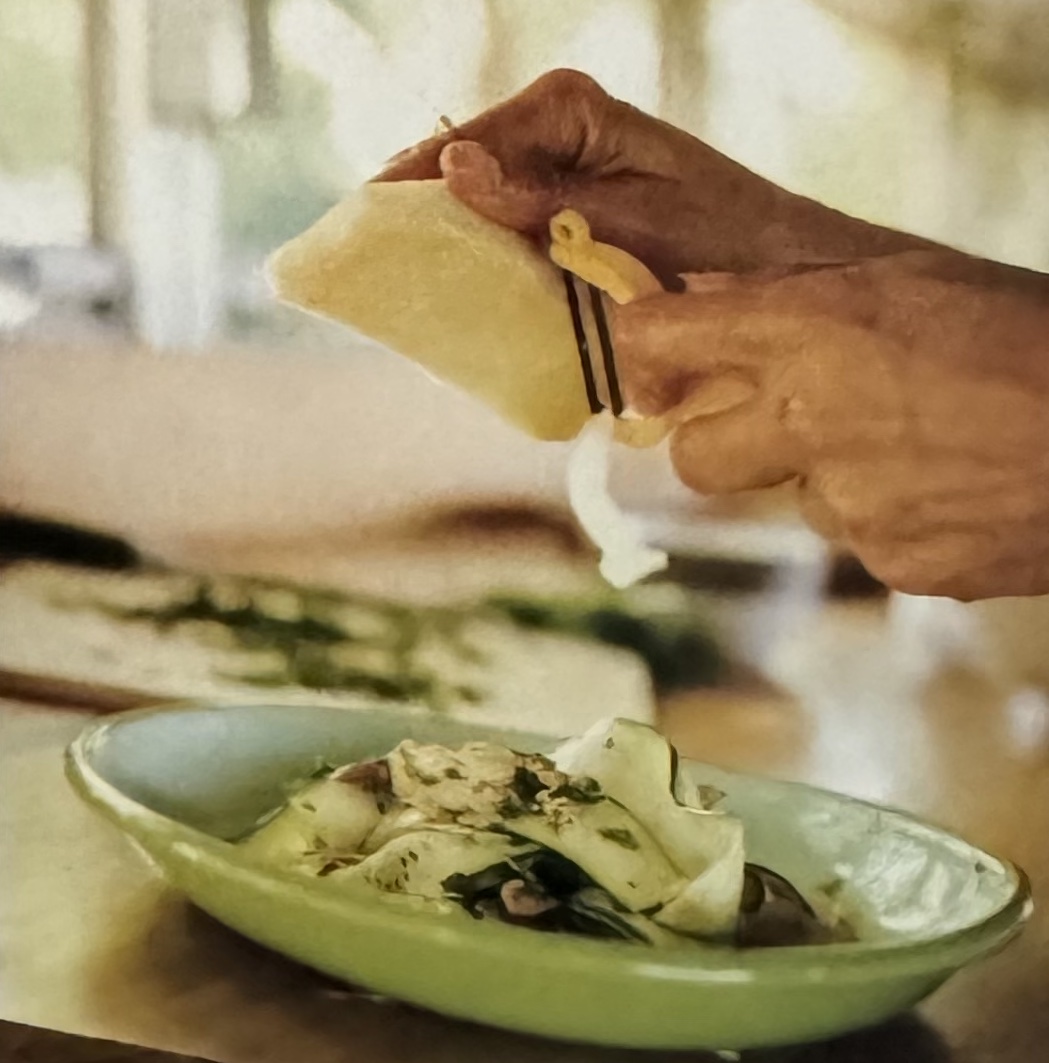McDowell Valley, a Chance Discovery
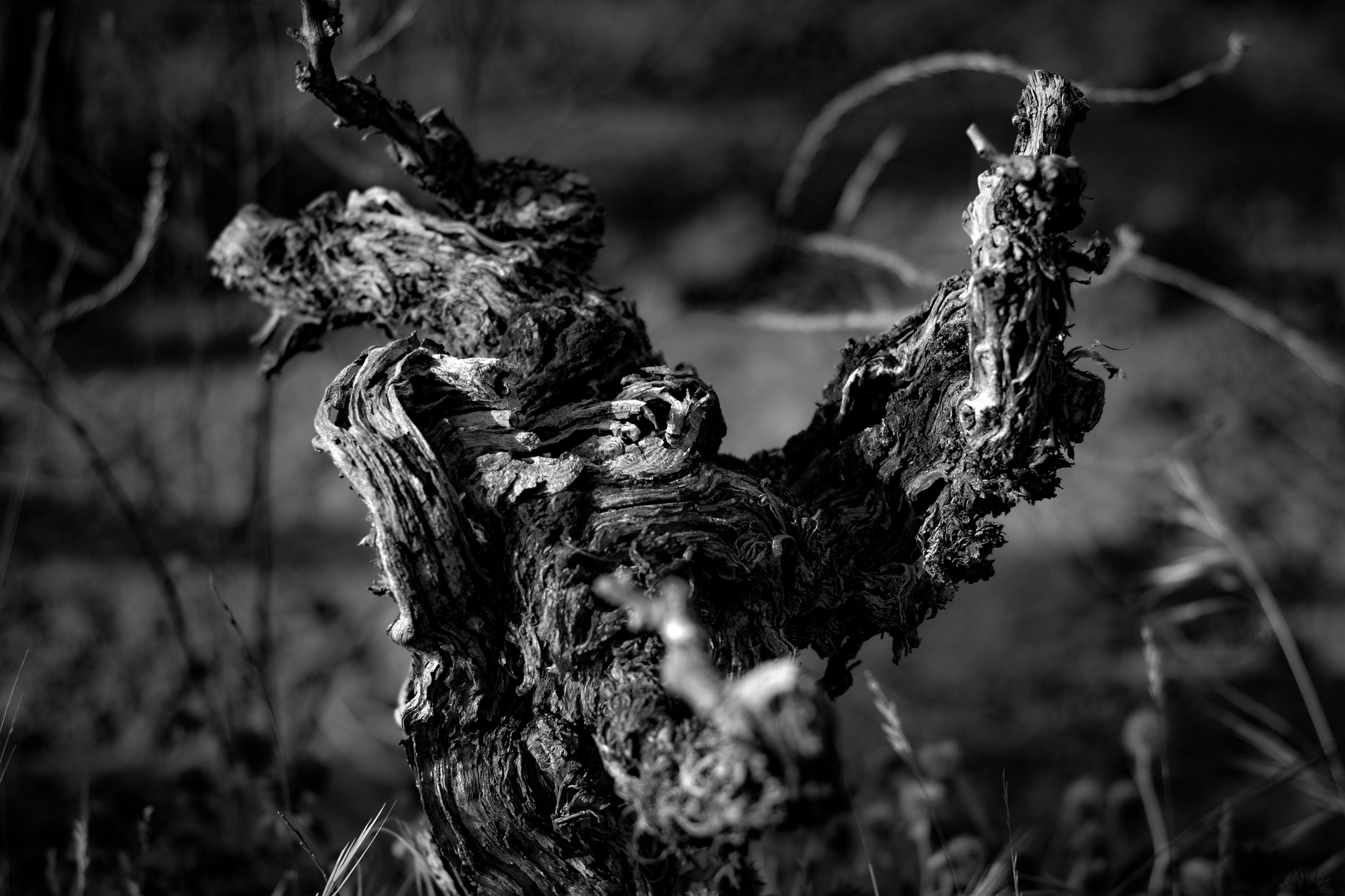
“The climate of the valley is delightful, being almost that happy mean where summer’s heat and winter’s cold are unknown. It’s certain that the extremes of temperatures are not found here. The summer’s sun is robbed of its fierceness by a gentle bracing breeze that always finds its way up the river from the ocean, making the days very mild and even in temperature. The fogs that infest the coast do not reach this valley often. To sum the matter up in a few words, the climate is all that can be desired.”
Lyman Palmer, ‘History of Mendocino County’, 1880
Hidden within the rugged Mayacamas Mountain range of southeastern Mendocino County, McDowell Valley sits atop a sloped benchland at 1,000ft above sea level, entirely enclosed by steep cliffs, and cut through on its western flank by the Russian River. In springtime, the mountains provide warmth and reprieve from early frost, and in the hot summer months, they create a deep, round ‘cold-sink’ that provides the tiny valley with significantly cooler nights than the surrounding area. Here, nestled in the mountains, you’ll find the towering ancient vines of McDowell Valley’s famed Gibson Block. Planted in multiple rounds dating back to the 1880s, these dry-farmed vines are known to be among the oldest in the western world, and have continually produced ethereal wines for nearly a century and a half.
STRIKING OUT, AND A CHANCE DISCOVERY
McDowell Valley’s story is one of chance and luck. Like so many others of the time, Paxton McDowell came to California in the mid-1800s with hopes of gold—and just like so many others before and after, the quick fortunes of precious metal eluded him. A farmer in his previous life, McDowell set out on foot looking for farmland to homestead. When he came upon the town of Hopland, he met Fernando Feliz, who at the time owned most of the area from an old Spanish land grant. In 1852, with a sturdy handshake, the two struck a deal whereby Paxton McDowell would pay 1,200 gold pieces for a section of land defined by how big of a loop he could ride his horse in one days’ time.
It was McDowell’s descendants however, the Buckman family, that first began cultivating wine grapes in the area; planting Syrah, Grenache, Carignane, and Petite Sirah beginning in the 1880s. Alfred Buckman, born 1899, recalls the early years of wine growing in a 1980 interview, “At harvest time, the wineries would come and test the sugar and tell us when to pick—they wouldn’t take grapes lower than 23 Brix. The Native Americans from the adjoining rancheria would join our family and neighbors and assist with the picking, where we’d earn 5 to 10 cents per 50lb box of grapes. The boxes were hauled by a four-horse team and wagon to the railhead in Hopland where they were shipped down to Asti.”
Buckman recalled life during harvest fondly, working daily from “when we got up with the lantern, and ending when we went to bed with the lantern. On Saturday nights we were too tired to do anything but fall into bed. The vineyards were cultivated by horse and plow, sulfuring was done by hand with gunnysacks, and as for frost protection… we prayed a lot.” Buckman continued, “nothing else does too well in McDowell Valley but wine grapes, and they’re the best in the whole darn country.” For decades into the early 1900s, the vineyard thrived and was a prized source of grapes for many of California’s top winemakers.
ENTER THE CRAWFORDS
At the turn of the century, McDowell Valley was a bustling tourist destination, hailed for its breathtaking scenery, and sought after by the masses for its incredible air quality. A redwood resort hotel opened on the east side of the property near the natural soda water spring in McDowell Creek, and at the height of its popularity, the resort saw thousands of visitors every year—the roads into McDowell Valley constantly busy with freight and passenger wagons traversing from Lake County and Mendocino. To many in California and beyond, this little valley was paradise.
Then came the Great Depression, Prohibition, the second World War, and the eventual collapse of the American wine industry. The resort closed and was dismantled, the travelers stopped coming, and McDowell Valley faded out of time and memory, once again reclaimed by the rugged mountain wilderness.
Chance and luck. In the 1960s William and Karen Crawford often piloted their private plane over McDowell Valley as they were coming and going from family-owned timber mills and cattle ranches—always marveling at the wild beauty of the area as they flew overhead. With the timber and livestock industries entering a tumultuous period, the Crawfords began looking for ways to diversify, and a surging Californian wine industry caught their attention. By 1970 the Crawfords had purchased a majority of the valley and aptly named their new venture ‘McDowell Valley Vineyards’.
Tragically, William Crawford died a year later while piloting his plane over the northern California mountains. Karen Crawford kept the dream alive, however, remarrying to Richard Keehn and working tirelessly to establish McDowell Valley Vineyards as one of the top wine grape producers in Mendocino County. In 1979 the couple established the winemaking side of their business—making history as the world’s first solar integrated winery by utilizing state-of-the-art passive and active solar technology to conserve energy and water—the blazing sun logo on their wine label commemorating the significance. The inaugural bottling in 1980 of their star varietal, Syrah, was met with instant critical success, winning 6 gold medals in 8 competitions entered, and once again casting the nation’s attention on the long-forgotten, hidden valley.
AVA STATUS ACHIEVED, A DREAM REALIZED
“When you leave Sanel Valley, the highway goes up a rocky gorge. In the spring, when the grass is green and the moss is on the rocks, they show off their dark green coats to any travelers who may come by—and it will surely make you glad you came that way. The gorge is full of ancient oak trees, and, if there is water in the creek that comes down through the big rocks, it sings as it splashes along, for the creek bed is steep—no murmuring brook to this stream. Then you come out to the valley itself, where nature placed it as if on a hilltop. The steep brushy mountain for a background makes the valley seem so big.”
‘McDowell Valley’, Ray Schultz, “Valleys of Mendocino County” 1981
“Whether viewed by auto or air, the valley is quickly perceived to be visibly contained by the surrounding mountains. The soils of the valley are unique in that they are mainly fertile terrace types that produce well-balanced vines and excellent quality wines. In my opinion, McDowell Valley is unique among the wine-growing areas of Mendocino County, and is deserving of a distinct area appellation.”
Bruce Beardon, Farm Advisor, ‘Petition for McDowell Valley AVA’, 1984
“Enthusiasm, not controversy, accompanies this petition.”
Karen Keehn, VP McDowell Valley Vineyards, ‘Petition for McDowell Valley AVA’, 1984
In 1982, fresh out of college, Karen Crawford’s son, William ‘Bill’ Crawford became involved with the winery, adding new momentum to the already thriving business. The Crawford’s knew that what they had was something special, and through their perseverance and commitment, along with the full support of the winemaking and agricultural communities, McDowell Valley petitioned and officially achieved AVA status in 1987. AVAs (American Viticulture Areas) are distinct geographical regions that allow winemakers to convey the pedigree of their wines by labeling them from specific areas.
In the late 1980s, led by the then notorious ‘cowboy winemaker’ Bill Crawford, McDowell Valley Vineyards refocused, making the decision to concentrate on Rhône varietal wines. Bill understood how close the climate and mood of McDowell Valley compared to the French vineyards along the Rhône River as it met the Mediterranean. To him, the decision was obvious. “We just looked at our company and at how many medals our Syrah had won over the years.”
Syrah is undoubtedly the noblest and most well-known of the Rhône varietals, and the towering ancient vines of Gibson Block in McDowell Valley are among the oldest known in the western world. With vines dating back to the 1880s, this block contains multiple varietals that all contribute to a beautiful Syrah-based field blend. These deep-rooted, chance-discovered vines combine to produce silky smooth, rich wines with intense, concentrated flavor. “The real quality difference among wines is a direct result of the caliber of grapes,” said Bill. “We believe the right conditions exist in McDowell Valley to make America’s best Syrah.”
THE RHÔNE RANGERS
In a continued effort to establish his beloved varietals as a centerpiece in American wine culture, Bill Crawford joined the likes of Joseph Phelps of Joseph Phelps Winery, Fred Cline of Cline Cellars Winery, and Steve Edmunds of Edmunds St. John, among others, founding the Rhône Rangers in the late 1980s—a group devoted to promoting the planting and use of grape varietals from France’s Rhône Valley region. Their success helped revive many traditional Rhône varietals that were dying out in California, such as Grenache, Mouvedre, and Viognier.
Syrah, however, always maintained its position as the star varietal. “Syrah is really leading the way for us,” said Bill Crawford in his cowboy directness. “People who drink Merlot will like it, and people who drink Cabernet feel it’s sophisticated enough for them to drink as well.” Bill shrugs, just another day at the ranch.
Marietta Cellars, A NEW ERA
The McDowell Valley always had a special place in the heart of Chris Bilbro, Marietta’s founder. In Billy Crawford he also found a kindred spirit who loved the outdoors—from the mountains in Montana, to fishing and diving all over the world. Chris had a habit of dropping off an abalone now and then to folks he cared about… It may have been those very abalone that moved Billy to call Marietta when he decided to sell his vineyards. In any case, it led to a sweet, friendly transfer of responsibility for those ancient vines and beautiful property between two like-minded families.
In 2012 Marietta purchased McDowell Valley Vineyards after working with the fruit over several decades. The conditions in McDowell Valley are perfect for a delicate balance of bright fruit, savory richness, and intensity in a finished wine—especially in the Rhône varietals grown there. Marietta’s commitment to sustainability and honoring the delicate historic nature of the valley has culminated in the most highly regarded wines ever produced in the AVA—and once again Syrah is leading the way.
The 2018 Gibson Block Syrah has been praised by critics such as Robert Parker and James Suckling. Ancient vines translate into distinctive character with refined integrated tannins, crunchy graphite minerality, and an impeccably bright finish. In addition to the highly-acclaimed Gibson Block, McDowell Valley has provided the provided the core components to Marietta’s classic ‘Old Vine Red’ for a generation, gaining the wine wide-spread acceptance as California’s leading red blend.
While the 2018 Gibson Block is currently sold out at the winery, there are a few remaining bottles reserved for Marietta Cellars Wine Club Members during the upcoming Winter Club Release. CLICK HERE to learn more about the Marietta Wine Club.
Gibson Block SYRAH
Gibson Block Syrah, made entirely from the towering ancient vines planted in the 1880s, has been praised by critics such as Robert Parker and James Suckling, and has gained a reputation as one of California’s top Syrahs. A profound and energetic red wine, the Gibson Block Syrah has dynamic dark fruit gaminess at its core. Black cherries and blueberries abound with crushed peppercorn structure with a hint of rosemary.
2018 Gibson Block Press
96 POINTS | WINE ADVOCATE
“The 2018 Gibson Block Syrah comes from very old vines interplanted with other varieties like Grenache, Trousseau Noir and Mission. They are dry-farmed, picked together and co-fermented. It has a deep ruby-purple color and deep, layered aromas of tar, earth, blackcurrant liqueur, cast iron and dried violets. The full-bodied palate bursts with juicy acidity, sparks of Luxardo cherry and a silky, rounded mouthfeel. It finishes very long and perfumed.” – E.B.
94 POINTS | JAMES SUCKLING
“Blackberry, black-licorice and tar aromas follow through to a full body with round, soft tannins that are reserved and focused. Fresh finish. Rich and spicy at the end with a slight meatiness. ” – J.S.
Learn more about the many benefits of Marietta membership.



